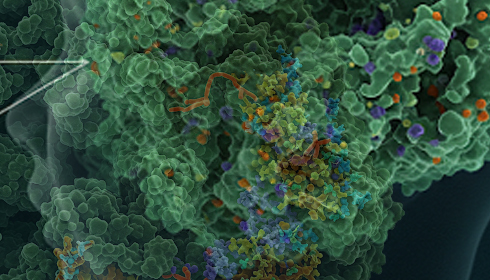
Innovative Research Revitalizes Fight Against Whooping Cough Amid Vaccine Hesitancy
Whooping cough, known as pertussis, previously wreaked havoc on children throughout the U.S. and worldwide until the introduction of vaccines in the 1940s. The annual fatalities in the U.S. have dropped to double digits, indicating that the disease is on the verge of being eradicated. In a concerning development, whooping cough has made a resurgence in recent years. The drop in vaccine coverage following the COVID-19 pandemic has posed significant challenges for health officials, who are now facing unforeseen outbreaks, especially among at-risk infants who are not yet eligible for vaccination.
In 2024, multiple outbreaks prompted hospitals and public health agencies to urgently seek resources. The swift comeback of pertussis has sparked an immediate quest for enhanced vaccines. Recent research from The University of Texas at Austin presents an intriguing development. A collaborative effort between UT’s McKetta Department of Chemical Engineering and the Department of Molecular Biosciences has achieved notable progress in unravelling the intricacies of the infection with the goal of enhancing vaccine efficacy.
Their research focussed on the pertussis toxin (PT), a potent chemical compound produced by Bordetella pertussis, and is featured in the Proceedings of the National Academy of Sciences. This toxin weakens the immune response and initiates the intense symptoms linked to whooping cough. The UT team concentrated on two powerful antibodies: hu11E6 and hu1B7, which neutralise PT through different mechanisms. Using advanced cryo-electron microscopy, scientists have accurately mapped the specific spots on PT where antibodies attach. Hu11E6 interferes with the toxin's capacity to attach to human cells by focusing on its sugar-binding sites, while hu1B7 prevents the toxin from entering cells, thus averting cellular harm.
“At present, a number of innovative pertussis vaccines are undergoing research and clinical trials,” stated Jennifer Maynard, a professor of chemical engineering at the Cockrell School of Engineering and the lead author of the study. “The insights we’ve gathered can seamlessly integrate into upcoming iterations, enhancing both the overall efficacy and durability of the protection offered.” Maynard’s assertion highlights the possibility for these insights to propel the development of the next generation of pertussis vaccines. From an editorial perspective, it is evident that incorporating these insights into vaccine development could represent a significant milestone, particularly in light of the disease's resurgence following a public health emergency.
The ramifications reach far beyond the realm of vaccine development. The research underscores the potential of these antibodies as promising therapeutic options for infants who are infected or at high risk. Previous studies conducted by Maynard and his team suggest that these antibodies have the potential to reduce the deadly impacts of pertussis infection, possibly averting serious lung injury and fatalities. Researchers at the University of Texas are actively looking for collaborations to advance these therapeutic applications, a step that has the potential to transform treatment protocols for the most at-risk groups.
The ongoing threat of whooping cough continues to be a significant concern. Often referred to as the “100-days cough” because of its lengthy persistence, this illness remains a significant threat, resulting in approximately 200,000 fatalities worldwide annually, mainly affecting infants and young children. Contemporary acellular pertussis vaccines represent notable progress in immunisation, yet they offer protection for a limited duration of just two to five years. Recent statistics indicate a remarkable 169% rise in cases in New York City since 2023, alongside an astonishing 500% increase since 2019. Meanwhile, Australia is facing its most significant outbreak since the 1940s, with approximately 41,000 cases reported this year.
Health officials highlight the significance of missed vaccinations, particularly among pregnant women, as a crucial element of concern. “Preventing disease in individuals at high risk is often a more straightforward approach,” noted Annalee W. Nguyen, a research professor in chemical engineering. “When a person is gravely ill, their immune system struggles to operate effectively, making recovery more challenging.” Nguyen highlights the crucial role of vaccination as a preventive measure, especially during pregnancy, safeguarding newborns until they are eligible for their vaccinations.
These findings urge us to address the intertwined biological and social challenges we face. Recent advancements in antibody mapping present an exciting opportunity for the future, but the ongoing challenge of vaccine hesitancy poses a significant risk to these developments. With public confidence in vaccinations rebounding after the pandemic, it will be crucial to blend cutting-edge research with strong public health communication to guide communities back to enhanced immunity.